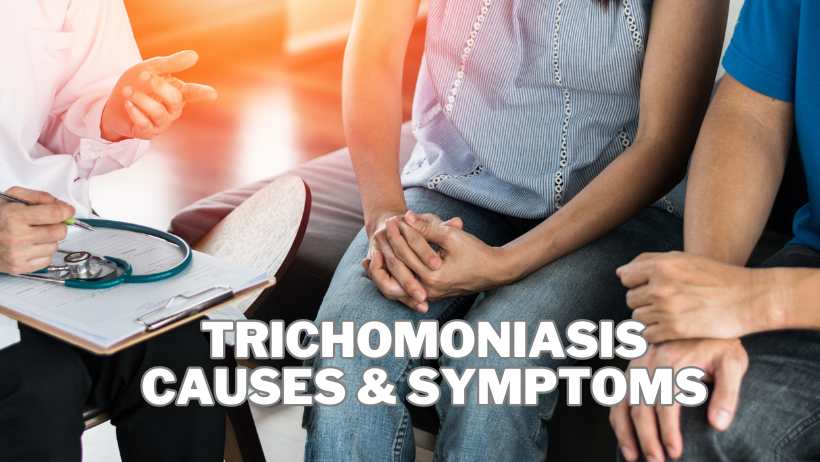
Learn about trichomoniasis: causes, symptoms, and treatment. Find out how to get tested, prevent reinfection, and protect your sexual health.
In “Understanding Trichomoniasis: Causes, Symptoms, and Treatment,” you will learn about a common sexually transmitted infection called trichomoniasis. This infection is caused by a parasite called trichomonas vaginalis, but the good news is that it can be easily cured with the help of anti-parasitic medication.
If you are experiencing symptoms such as heavy discharge, odor, burning with urination, or genital itchiness, it’s important to get tested for trichomoniasis. The testing can be done through a vaginal swab or urine test, and if diagnosed, you will typically be prescribed oral medication for about a week.
Remember to inform your sexual partners and abstain from sex until the infection is fully cleared to prevent reinfection. Untreated trichomoniasis can increase the risk of other sexually transmitted infections and complications during pregnancy, so seeking timely treatment is crucial.
Understanding Trichomoniasis
Trichomoniasis is a common sexually transmitted infection (STI) that affects both men and women. It is caused by a microscopic parasite called Trichomonas vaginalis. This parasite is typically transmitted through sexual contact, including vaginal, oral, or anal sex. It is important to understand this condition in order to recognize the symptoms, seek appropriate testing and treatment, and prevent the spread of infection.
What is Trichomoniasis?
Trichomoniasis is caused by the parasite Trichomonas vaginalis, which infects the genital area. The parasite can survive in various parts of the body, including the vagina, urethra, and prostate. When a person becomes infected with trichomoniasis, they may experience symptoms such as heavy vaginal discharge, an unpleasant odor, a burning sensation during urination, and genital itchiness. However, it is also possible to have trichomoniasis without experiencing any symptoms.
Prevalence and Transmission
Trichomoniasis is one of the most common STIs worldwide. It is estimated that around 156 million people are infected with trichomoniasis each year. The infection is more common in women than in men, with women being twice as likely to be diagnosed with trichomoniasis. However, both men and women can transmit the infection to their partners during sexual activity.
Causes of Trichomoniasis
As mentioned earlier, trichomoniasis is caused by the parasite Trichomonas vaginalis. This parasite can be easily transmitted through sexual contact with an infected person. It can survive outside the human body for a short period of time, which means that sharing sex toys or touching contaminated surfaces can also spread the infection. It is important to note that trichomoniasis cannot be contracted through casual contact such as hugging, kissing, or sharing utensils.
Symptoms of Trichomoniasis
Trichomoniasis can present with a variety of symptoms, although some people may remain asymptomatic. The most common symptoms include:
Heavy Vaginal Discharge
One of the hallmark symptoms of trichomoniasis is a thin, foamy, and often yellow-green vaginal discharge. This discharge may have a strong odor and can range from mild to severe.
Unpleasant Odor
Trichomoniasis can cause an unpleasant fishy or musty odor in the vaginal area. This odor may become more noticeable after sexual activity or during menstruation.
Burning Sensation during Urination
A burning or itching sensation during urination may occur in individuals with trichomoniasis. This discomfort is often related to the inflammation caused by the infection.
Genital Itchiness
Itching and irritation in the genital area can be a symptom of trichomoniasis. This itching can be persistent and may worsen over time if left untreated.
Other Possible Symptoms
In addition to the main symptoms mentioned above, trichomoniasis can sometimes cause discomfort or pain during sexual intercourse, as well as lower abdominal pain or discomfort.
Testing for Trichomoniasis
If you suspect that you may have trichomoniasis, it is important to undergo testing to confirm the diagnosis. There are a few different methods used to test for trichomoniasis:
Vaginal Swab Test
A healthcare provider will collect a small sample of vaginal fluid using a swab. This sample will be examined under a microscope or sent to a laboratory for testing. This method is often used for women.
Urine Test
For men, a urine sample may be collected for testing. This test can detect the presence of the parasite by searching for its genetic material in the urine.
Treatment of Trichomoniasis
The good news is that trichomoniasis is easily treatable with anti-parasitic medication. The most common treatment is oral medication, typically a single dose of an antibiotic called metronidazole or tinidazole. These medications kill the parasite and clear the infection. It is important to complete the full course of treatment as prescribed by your healthcare provider, even if symptoms improve before finishing the medication.
Informing Sexual Partners
After being diagnosed with trichomoniasis, it is crucial to inform your sexual partners about your infection. This is important for several reasons:
Why It is Important
Informing your partners about the infection allows them to seek testing and treatment as well. If left untreated, trichomoniasis can continue to be spread between sexual partners, leading to reinfection and ongoing transmission.
How to Have the Conversation
Having open and honest communication with your partners about trichomoniasis can help ensure they take the necessary steps to protect their health. It is important to approach the conversation in a non-judgmental and supportive manner. Provide information about the infection, its symptoms, treatment options, and the importance of getting tested.
Preventing Reinfection
To prevent reinfection or the spread of trichomoniasis to others, it is essential to take certain precautions:
Avoiding Sexual Contact
Abstaining from sexual activity, including vaginal, oral, and anal sex, is the most effective way to prevent the spread or reinfection of trichomoniasis. It is important to wait until both you and your partner(s) have completed treatment and received a clean bill of health from your healthcare providers.
Using Condoms
Consistent and correct use of condoms during sexual activity can greatly reduce the risk of contracting or transmitting trichomoniasis. Condoms act as a barrier and help prevent direct contact between skin and bodily fluids, which can contain the parasite.
Completing the Full Course of Treatment
It is crucial to complete the full course of treatment prescribed by your healthcare provider. Skipping doses or stopping treatment prematurely can lead to treatment failure and a higher risk of reinfection. It is important to follow the recommended treatment guidelines and attend any necessary follow-up appointments.
Complications and Risks
If left untreated, trichomoniasis can increase the risk of other sexually transmitted infections (STIs) such as HIV, gonorrhea, and chlamydia. The inflammation caused by the infection can make it easier for these infections to take hold and spread. Additionally, trichomoniasis can have specific complications for pregnant individuals.
Trichomoniasis and Pregnancy
Trichomoniasis can have potential risks for both the mother and the baby during pregnancy. It is crucial for pregnant individuals to seek prompt testing and treatment to ensure a healthy pregnancy.
Potential Risks to the Mother
Trichomoniasis in pregnant individuals can lead to premature rupture of membranes (amniotic sac), preterm labor, and an increased risk of acquiring other STIs. It is important for pregnant individuals to discuss their symptoms and concerns with their healthcare provider to receive appropriate testing and treatment.
Potential Risks to the Baby
If left untreated, trichomoniasis can potentially be transmitted to the baby during childbirth. This can lead to complications such as low birth weight, premature birth, and an increased risk of respiratory issues. Testing and treatment during pregnancy are essential to minimize these risks.
Testing and Treatment during Pregnancy
Pregnant individuals should undergo testing for trichomoniasis as part of their routine prenatal care. If an infection is detected, appropriate treatment will be prescribed by a healthcare provider to ensure the health and well-being of both the mother and the baby.
Conclusion
Trichomoniasis is a common STI that can cause significant discomfort and complications if left untreated. Recognizing the symptoms, seeking timely testing and treatment, and informing sexual partners are crucial steps in managing and preventing the spread of trichomoniasis.
Remember to practice safe sexual behaviors, complete the full course of treatment, and attend regular check-ups to ensure your overall sexual health and well-being. If you have any concerns or questions about trichomoniasis, do not hesitate to reach out to your healthcare provider.










